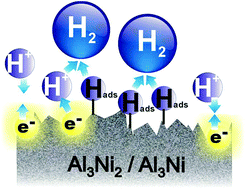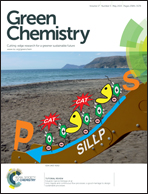The use of ultrasonic cavitation for near-surface structuring of robust and low-cost AlNi catalysts for hydrogen production†
Abstract
Ultrasonically induced shock waves stimulate intensive interparticle collisions in suspensions and create large local temperature gradients in AlNi particles. These trigger phase transformations at the surface rather than in the particle interior. We show that ultrasonic processing is an effective approach for developing the desired compositional gradients in nm-thick interfacial regions of metal alloys and formation of effective catalysts toward the hydrogen evolution reaction.


 Please wait while we load your content...
Please wait while we load your content...